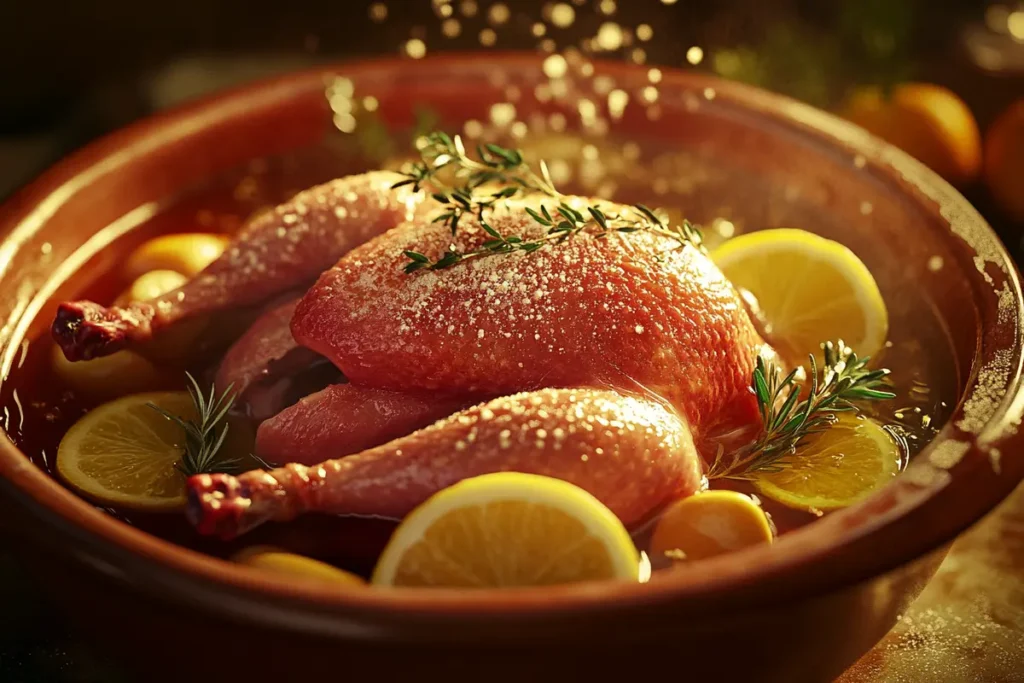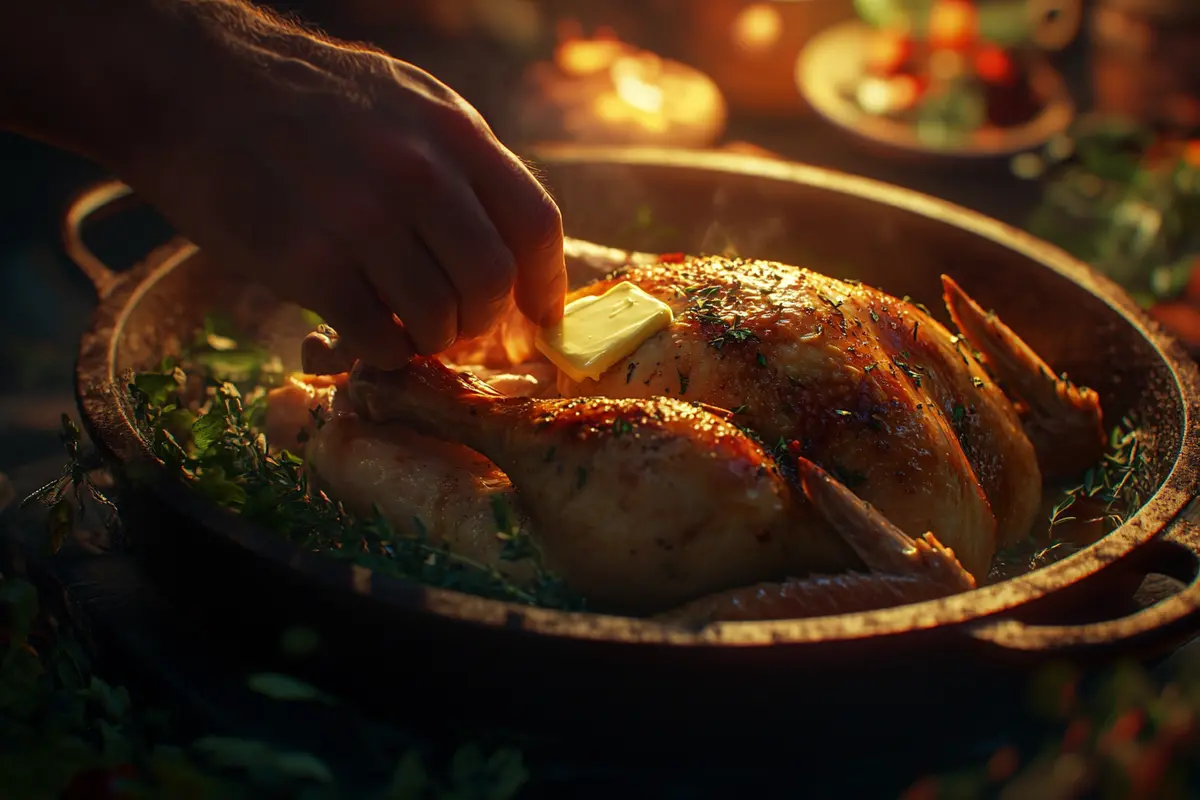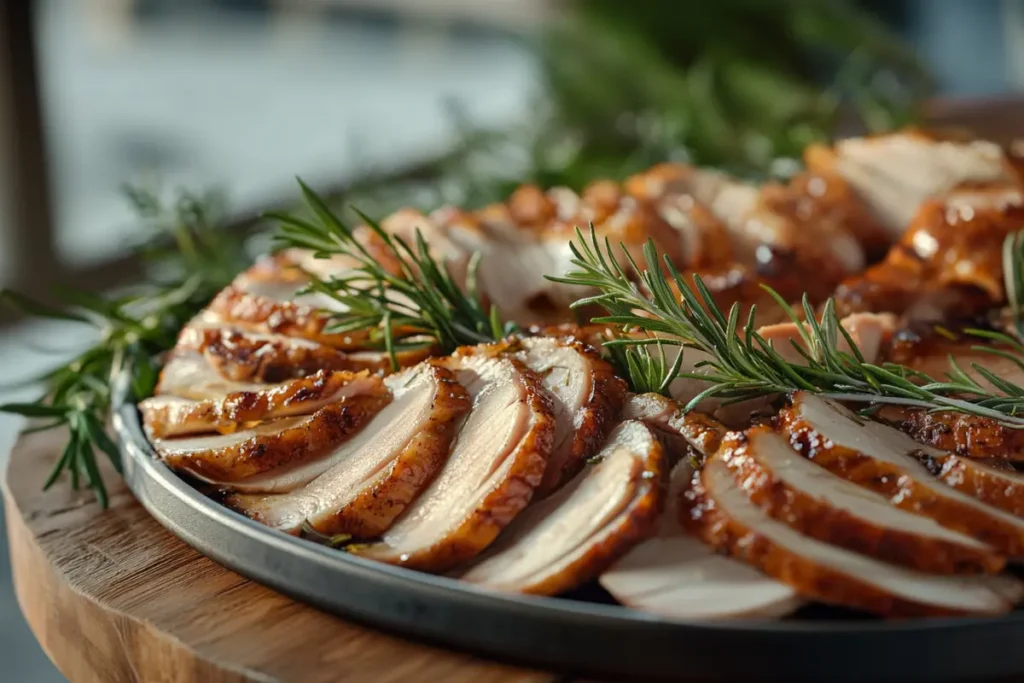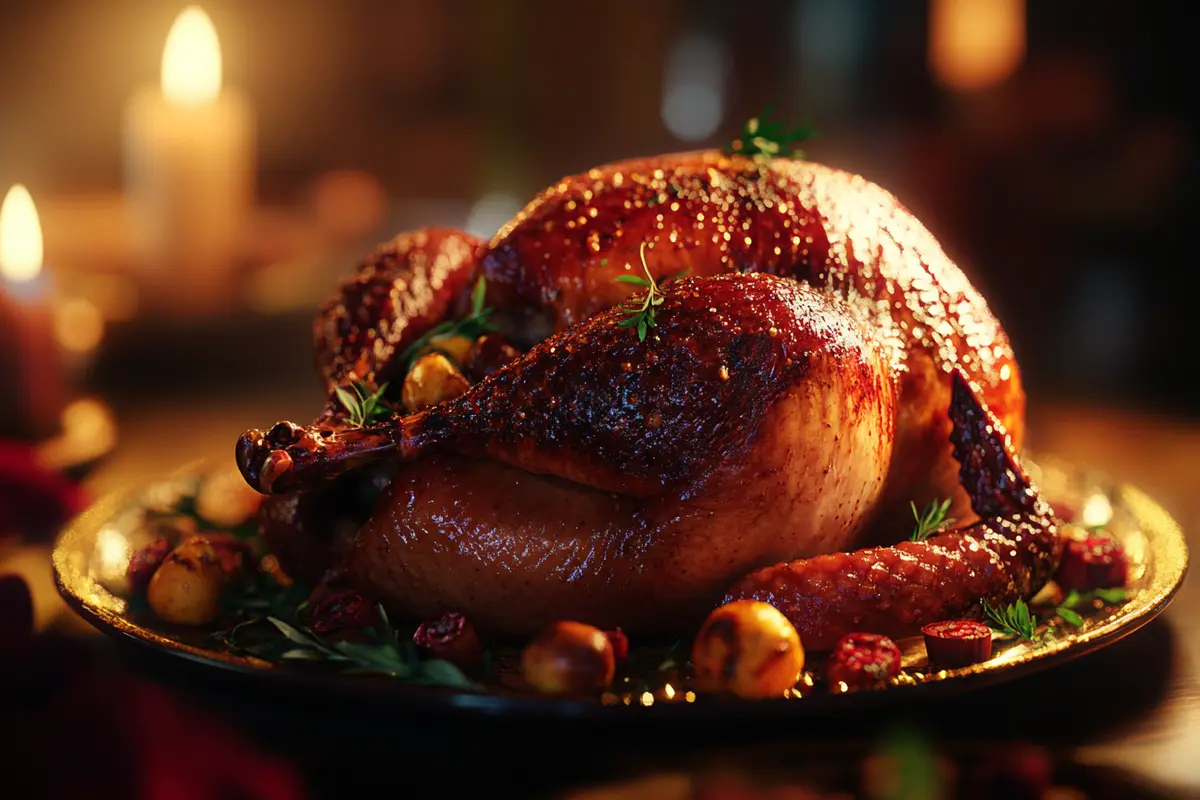When Thanksgiving or any other festive occasion comes around, a common question lingers in many households: What is the secret to a juicy turkey? There’s nothing quite like the feeling of presenting a beautifully cooked, succulent turkey that makes everyone at the table lean in eagerly. However, many cooks struggle with ensuring their bird stays moist and tender. This article provides comprehensive insights into achieving a perfectly juicy turkey, from preparation to serving.
The Importance of Juiciness in a Turkey
A turkey that’s juicy is the highlight of any celebration, offering rich flavors and tender meat that almost melts in your mouth. But what is the secret to a juicy turkey? The secret lies in a combination of careful preparation, cooking techniques, and post-cooking steps. Ensuring your turkey remains moist means avoiding a dry and stringy texture—which is often the dreaded outcome for many home cooks.
Before diving into the exact methods, it is worth exploring the science behind why turkey tends to dry out and how we can combat that effectively. Serious Eats explains that turkey breast meat, in particular, is prone to drying out because of its low-fat content. Therefore, maintaining moisture requires different methods for dark and white meat.
Another useful reference comes from The Kitchn, which outlines some of the key steps for keeping moisture locked in during roasting, such as proper brining and temperature control. These methods are crucial to ensuring the meat remains juicy and flavorful.

Preparing Your Turkey for Maximum Juiciness
The first step to getting a juicy turkey begins long before it goes into the oven. Here are some preparation tips to set yourself up for success:
1. Brining Your Turkey
Brining—soaking the turkey in a salty solution—is an essential step. The brine solution helps the turkey absorb additional moisture, ensuring that it stays juicy during cooking. There are two main types of brining: wet brining and dry brining.
- Wet Brining: Involves submerging the turkey in a saltwater solution for 12 to 24 hours. Adding aromatic herbs like rosemary, thyme, and sage can help enhance the flavor.
- Dry Brining: Uses a salt rub that you apply directly to the turkey. This technique takes about 24 to 48 hours but has the advantage of making the skin crispier during roasting.
2. Choosing the Right Size Bird
Choosing the right size turkey is crucial. A smaller bird (12-14 pounds) tends to cook more evenly compared to a larger bird. Larger birds often dry out in certain areas while other parts are still cooking. If you need more meat, consider roasting two smaller turkeys rather than one large one.
3. Butter Under the Skin
Another answer to what is the secret to a juicy turkey involves using plenty of fat. Inserting softened butter or a mixture of butter and herbs under the skin before cooking not only provides additional flavor but also ensures the meat stays moist. The fat helps baste the meat as it melts during the cooking process.
4. Seasoning Generously
Seasoning your turkey properly is another key element of ensuring a juicy bird. Use a blend of salt, black pepper, garlic powder, onion powder, paprika, and any other herbs you prefer. Rub the seasoning mixture generously both under and over the skin, and inside the cavity. This helps add flavor throughout the turkey and enhances the taste of every bite.

Cooking Techniques That Keep Your Turkey Juicy
After proper preparation, how you cook your turkey plays a significant role in keeping it moist.
1. Oven Temperature Control
Roasting your turkey at the right temperature is key. Here’s a suggested method:
- Start the turkey at a high heat (around 450°F) for the first 30 minutes to help brown the skin.
- Reduce the heat to 325°F for the remainder of the cooking time. This slower cooking temperature allows the meat to cook through gently without losing too much moisture.
2. Use an Oven Thermometer
For precise cooking, an oven thermometer is a must. The temperature inside the oven can often differ from what’s displayed, which can affect the final outcome. Cooking your turkey to the correct internal temperature is crucial for keeping it juicy—aim for an internal temperature of 165°F at the thickest part of the breast.
3. Basting
Basting involves periodically spooning pan drippings or other flavorful liquids over the bird as it roasts. While some debate the effectiveness of basting, it does help in keeping the skin moist and imparts additional flavor. Baste the turkey every 30-40 minutes, but don’t overdo it, as opening the oven door frequently lets out heat and can dry out the meat.
4. Tent with Foil
Covering the breast with a loose tent of aluminum foil after the initial high-heat cooking helps to prevent it from overcooking and drying out while allowing the rest of the bird to cook through.
5. The Inverted Roasting Method
One less common approach to ensure juiciness is the inverted roasting method. Start cooking the bird breast side down. This allows the juices to run down into the breast, ensuring it stays moist. After halfway through cooking, turn the bird breast side up to get that signature golden-brown finish.
6. Spatchcocking
Spatchcocking involves removing the backbone of the turkey and flattening it before roasting. This technique allows for more even cooking, which helps retain juiciness throughout the bird. Spatchcocking also reduces cooking time, which can help prevent the meat from drying out.
7. Using a Water Bath
Another technique for maintaining moisture is to use a water bath. Place a pan filled with water on the lower rack of your oven while roasting the turkey. The steam generated from the water helps keep the meat moist and tender during the cooking process.

Resting Your Turkey
After you’ve cooked your turkey to perfection, the process isn’t quite done. Allowing the bird to rest is critical to maintaining moisture.
1. Resting Time
Resting the turkey for at least 20 to 30 minutes ensures that the juices redistribute throughout the meat, rather than spilling out when you carve. Cover the turkey loosely with foil to retain warmth while it rests.
2. Carving Techniques
Carving your turkey properly can also help preserve juiciness. Start by cutting off the drumsticks and thighs, followed by the wings. When slicing the breast meat, cut against the grain for a more tender result.
3. Resting Longer for Larger Birds
For larger birds, consider extending the resting time to 45 minutes to an hour. This allows the juices ample time to redistribute, ensuring a juicy turkey throughout. During the resting period, the internal temperature of the turkey will continue to rise slightly, helping to finish off any undercooked sections.
Additional Tips for a Juicy Turkey
1. Stuffing Outside the Bird
While stuffing a turkey may seem traditional, cooking the stuffing separately is the better option if you’re aiming for a juicy turkey. Cooking stuffing inside requires longer cooking times, which often leads to the meat drying out.
2. Use a Meat Injector
Injecting the turkey with broth, melted butter, or a marinade before cooking can add extra moisture and flavor directly into the meat. This technique is especially useful for very large birds or when you want a pronounced flavor.
3. Cover the Breasts with Bacon
For an indulgent take, cover the breast with strips of bacon before roasting. The fat from the bacon keeps the breast moist, and the crispy bacon itself can be served alongside the turkey.
4. Aromatics in the Cavity
Filling the turkey cavity with aromatics like onions, garlic, citrus, and herbs can help infuse the meat with moisture and flavor. Just be careful not to overstuff the cavity, as this can affect even cooking.
5. Dry the Skin Thoroughly
For crispy skin and juicy meat, make sure to thoroughly dry the turkey’s skin before roasting. Pat the skin dry with paper towels after brining, and leave the turkey uncovered in the refrigerator for a few hours. This helps ensure that the skin becomes crispy while roasting, locking in the moisture underneath.
6. Rotisserie Cooking
Another method to maintain a juicy turkey is rotisserie cooking. Cooking the turkey on a rotisserie allows it to self-baste as it spins, which keeps the meat moist and flavorful throughout the cooking process. This method also ensures even heat distribution, further reducing the risk of overcooking.
Choosing the Right Equipment for a Juicy Turkey
1. Roasting Pan
A good roasting pan is essential for evenly cooking a turkey. Choose a sturdy pan with high sides to catch the juices and drippings. The pan should be large enough to hold the turkey comfortably without crowding, which ensures even cooking.
2. Rack for Even Cooking
A roasting rack elevates the turkey, allowing heat to circulate more evenly and preventing the bottom of the bird from becoming soggy. It also makes collecting drippings for gravy much easier.
3. Meat Thermometer
An instant-read meat thermometer is crucial for cooking your turkey to the correct temperature. This ensures that the turkey is cooked through while retaining moisture. Insert the thermometer into the thickest part of the breast and thigh without touching bone for an accurate reading.
4. Basting Tools
Using a proper basting brush or bulb baster can make the process of basting easier and more efficient. A silicone basting brush is ideal for evenly distributing the pan drippings without damaging the skin.
5. Carving Knife
A sharp carving knife is essential for slicing the turkey without tearing the meat. A long, thin blade will allow you to make clean cuts, helping to maintain the juiciness of each slice. A carving fork also helps keep the turkey steady while cutting.
Perfecting the Gravy
A juicy turkey deserves an equally delicious gravy. Here are a few tips for making the perfect gravy using the pan drippings:
1. Deglaze the Roasting Pan
After removing the turkey from the roasting pan, use a wooden spoon to scrape up the browned bits at the bottom of the pan. Add some broth or wine to deglaze the pan, releasing the flavorful bits that form the base of a rich gravy.
2. Make a Roux
In a separate saucepan, make a roux by combining equal parts fat (such as butter or the turkey drippings) and flour. Cook the roux until it turns a light golden color, which will add depth to the flavor of the gravy.
3. Combine and Simmer
Slowly whisk the deglazed pan drippings into the roux, adding more broth as needed. Simmer the gravy until it reaches your desired thickness, seasoning with salt, pepper, and herbs to taste.
4. Adding Aromatics to Gravy
To add more complexity to your gravy, consider incorporating aromatics like garlic, shallots, or fresh herbs. Sauté these ingredients in the fat before adding the flour to make the roux. This will infuse the gravy with an extra layer of flavor.
5. Strain for Smoothness
For a perfectly smooth gravy, strain it through a fine-mesh sieve before serving. This step ensures that any lumps or unwanted bits are removed, leaving you with a velvety, rich gravy to accompany your juicy turkey.
Mistakes to Avoid When Cooking a Turkey
1. Not Thawing Properly
A common mistake is not allowing enough time to thaw a frozen turkey. A fully frozen turkey can take several days to thaw in the refrigerator. Make sure to allow 24 hours of thawing time for every 4-5 pounds of turkey.
2. Overcooking the Turkey
Overcooking is one of the main reasons turkeys end up dry. To avoid this, keep a close eye on the internal temperature using a meat thermometer, and remove the bird from the oven as soon as it reaches 165°F in the thickest part of the breast.
3. Carving Too Soon
Carving the turkey too soon after removing it from the oven can cause the juices to run out, leaving the meat dry. Always allow the bird to rest for at least 20-30 minutes before carving.
4. Not Seasoning Adequately
A turkey needs generous seasoning, both inside and out, to enhance its flavor. Don’t be afraid to use plenty of salt, herbs, and spices to ensure every bite is flavorful.
5. Ignoring Carryover Cooking
Carryover cooking refers to the phenomenon where the turkey continues to cook even after it has been removed from the oven. If you wait until the internal temperature reaches 165°F before removing it from the oven, the temperature may continue rising, causing the meat to overcook. Remove the turkey when it reaches around 160°F, and let it rest to reach the desired temperature.
Frequently Asked Questions
What is the best way to cook a turkey to keep it moist?
The best way to keep a turkey moist is by brining it beforehand and roasting it at the correct temperature. Adding butter under the skin and resting the turkey after cooking are also essential steps.
How do you cook a turkey without drying it out?
To avoid drying out your turkey, make sure to monitor the internal temperature closely and cook the bird breast side down for part of the time. Adding a layer of fat, such as butter or bacon, also helps retain moisture.
How do you get the most juice out of a turkey?
To get the most juice out of a turkey, rest it after roasting, brine it before cooking, and make use of fat under the skin to lock in moisture.
Why is my turkey always dry?
Your turkey may be dry due to overcooking, inadequate resting time, or lack of moisture-retaining techniques like brining or using butter. Monitoring the internal temperature and ensuring proper resting time are key factors in keeping a turkey juicy.
Can I brine a turkey too long?
Yes, brining a turkey for too long can make it overly salty and affect the texture of the meat, making it mushy. Follow the recommended brining time—usually 12 to 24 hours for wet brining and up to 48 hours for dry brining—to avoid these issues.

